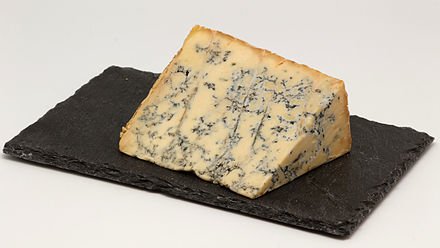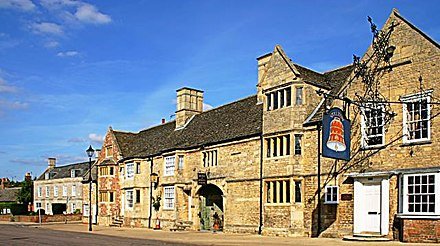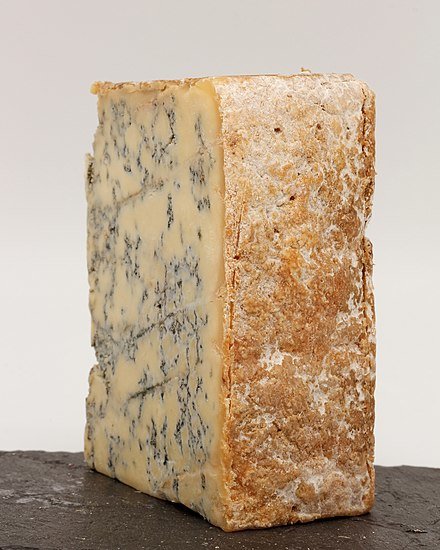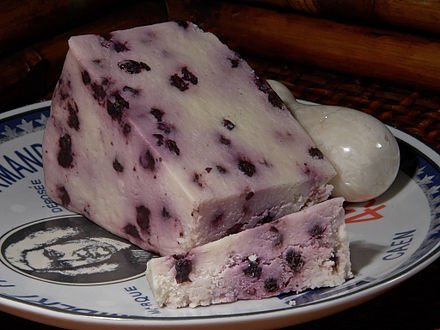British Heritage
Remember, Cherish, Learn.
beta
Stilton Cheese - the King of English Cheeses
A Quintessential Contribution to British Heritage.
At the heart of Britain's culinary heritage, Stilton Cheese is held with considerable esteem, recognized as a timeless icon of British gastronomy. Known colloquently as "The King of English Cheeses," Stilton's distinct character and rich history embody an essential facet of the nation's cultural legacy. From its recipe's inception to the international recognition it enjoys today, the Stilton cheese stands testament to the evolution and influence of British culinary arts.
Originating in England, Stilton cheese is produced in two unique varieties: Blue and White. The Blue variety incorporates Penicillium roqueforti, adding a distinctive aroma and taste, whereas the White variant does not. The European Commission has granted both types the status of Protected Designation of Origin (PDO), implying that only cheese produced in the three counties of Derbyshire, Leicestershire, and Nottinghamshire can carry the name "Stilton." The cheese owes its name to the village of Stilton, in modern Cambridgeshire, where it has been sold for centuries.
The modern form of Stilton cheese traces its roots back to the 1720s, with Frances Pawlett (or Paulet), a Wymondham cheese maker, credited with establishing its shape and style. Nonetheless, it's essential to acknowledge the continuum between locally produced Stilton and the commercial cheese industry, with the latter heavily leaning on local guidance for ensuring quality and authenticity.
Stilton's gastronomic fame was notably referenced by William Stukeley and Daniel Defoe in the 18th century. In his 1724 work, A Tour Thro' the Whole Island of Great Britain, Defoe described Stilton as a town famous for cheese, an "English Parmesan," marking an early recognition of Stilton's growing prestige.
The commercialisation of Stilton cheese is largely attributed to Cooper Thornhill, the owner of the Bell Inn on the Great North Road in the village of Stilton. Tradition has it that Thornhill stumbled upon a unique blue cheese while visiting a farm near Melton Mowbray in rural Leicestershire around 1730. Enthralled by the cheese's taste, he brokered a deal granting the Bell Inn exclusive marketing rights to Blue Stilton, catalysing its popularity.
By 1936, the Stilton Cheesemakers' Association (SCMA) was formed to advocate for regulations safeguarding the quality and origin of the cheese. A crucial milestone arrived in 1966, with Stilton being granted legal protection via a certification trademark, the only British cheese to have received that status.
For cheese to bear the Stilton name, it must be manufactured within Derbyshire, Leicestershire, and Nottinghamshire and use pasteurised local milk. This safeguarding regulation was strengthened further when Stilton manufacturers within these counties received protection under European Law as a PDO in 1996, preserving the authenticity and heritage of Stilton cheese.
The distinctiveness of Blue Stilton comes from piercing the cheese's crust with stainless steel needles, enabling air to enter the core and facilitate the mould's growth. This intricate process takes roughly nine to twelve weeks, with the cheese eventually reaching a fat content of around 35% and a protein content of 23%.
As of September 2016, only six dairies were licensed to produce Stilton, each being subject to regular audit by an independent inspection agency. These dairies are scattered across the heartland of Stilton production, the Vale of Belvoir, and its surrounding regions, embedding Stilton's creation deeply within these lands.
As an exemplar of British culinary tradition, Stilton has significantly impacted cheese-making not only in Britain but worldwide. Many blue cheeses are created in a manner akin to Blue Stilton, such as Oxford Blue and Shropshire Blue, whereas others have taken on unique names and styles in response to Stilton's PDO status.
Stilton cheese is typically savoured with celery or pears, blended into vegetable soups, crumbled over salads, or served over a steak. The cheese's rich, creamy texture and distinctive taste complement a wide array of food and drink, making it a versatile component in British gastronomy.
The influence of Stilton cheese transcends gastronomy and finds mention in various forms of popular culture. Esteemed English author G. K. Chesterton dedicated a playful sonnet to Stilton, while George Orwell praised it in his essay "In Defence of English Cooking." Furthermore, the search for unpasteurised Stilton cheese was a plot element of a Chef! episode titled "The Big Cheese," aired on BBC1 in 1993.
Stilton cheese stands as a profound symbol of British heritage, reflecting centuries of culinary tradition. Through the careful maintenance of its quality, authenticity, and regional ties, Stilton continues to hold a revered place in the world of cheese. With its intricate crafting process, distinct taste, and renowned reputation, Stilton cheese rightfully earns its title as the "King of English Cheeses," embodying the legacy and continuous evolution of British culinary arts.
Origins and the Development of Stilton Cheese
Originating in England, Stilton cheese is produced in two unique varieties: Blue and White. The Blue variety incorporates Penicillium roqueforti, adding a distinctive aroma and taste, whereas the White variant does not. The European Commission has granted both types the status of Protected Designation of Origin (PDO), implying that only cheese produced in the three counties of Derbyshire, Leicestershire, and Nottinghamshire can carry the name "Stilton." The cheese owes its name to the village of Stilton, in modern Cambridgeshire, where it has been sold for centuries.
The modern form of Stilton cheese traces its roots back to the 1720s, with Frances Pawlett (or Paulet), a Wymondham cheese maker, credited with establishing its shape and style. Nonetheless, it's essential to acknowledge the continuum between locally produced Stilton and the commercial cheese industry, with the latter heavily leaning on local guidance for ensuring quality and authenticity.
Establishing Stilton's Fame: Historical References and Commercial Exploits
Stilton's gastronomic fame was notably referenced by William Stukeley and Daniel Defoe in the 18th century. In his 1724 work, A Tour Thro' the Whole Island of Great Britain, Defoe described Stilton as a town famous for cheese, an "English Parmesan," marking an early recognition of Stilton's growing prestige.
The commercialisation of Stilton cheese is largely attributed to Cooper Thornhill, the owner of the Bell Inn on the Great North Road in the village of Stilton. Tradition has it that Thornhill stumbled upon a unique blue cheese while visiting a farm near Melton Mowbray in rural Leicestershire around 1730. Enthralled by the cheese's taste, he brokered a deal granting the Bell Inn exclusive marketing rights to Blue Stilton, catalysing its popularity.
Regulatory Milestones and Geographical Protection
By 1936, the Stilton Cheesemakers' Association (SCMA) was formed to advocate for regulations safeguarding the quality and origin of the cheese. A crucial milestone arrived in 1966, with Stilton being granted legal protection via a certification trademark, the only British cheese to have received that status.
For cheese to bear the Stilton name, it must be manufactured within Derbyshire, Leicestershire, and Nottinghamshire and use pasteurised local milk. This safeguarding regulation was strengthened further when Stilton manufacturers within these counties received protection under European Law as a PDO in 1996, preserving the authenticity and heritage of Stilton cheese.
The Art of Making Stilton
The distinctiveness of Blue Stilton comes from piercing the cheese's crust with stainless steel needles, enabling air to enter the core and facilitate the mould's growth. This intricate process takes roughly nine to twelve weeks, with the cheese eventually reaching a fat content of around 35% and a protein content of 23%.
As of September 2016, only six dairies were licensed to produce Stilton, each being subject to regular audit by an independent inspection agency. These dairies are scattered across the heartland of Stilton production, the Vale of Belvoir, and its surrounding regions, embedding Stilton's creation deeply within these lands.
The Influence of Stilton
As an exemplar of British culinary tradition, Stilton has significantly impacted cheese-making not only in Britain but worldwide. Many blue cheeses are created in a manner akin to Blue Stilton, such as Oxford Blue and Shropshire Blue, whereas others have taken on unique names and styles in response to Stilton's PDO status.
Stilton cheese is typically savoured with celery or pears, blended into vegetable soups, crumbled over salads, or served over a steak. The cheese's rich, creamy texture and distinctive taste complement a wide array of food and drink, making it a versatile component in British gastronomy.
Stilton in Popular Culture
The influence of Stilton cheese transcends gastronomy and finds mention in various forms of popular culture. Esteemed English author G. K. Chesterton dedicated a playful sonnet to Stilton, while George Orwell praised it in his essay "In Defence of English Cooking." Furthermore, the search for unpasteurised Stilton cheese was a plot element of a Chef! episode titled "The Big Cheese," aired on BBC1 in 1993.
Conclusion: Stilton, a Testament to British Heritage
Stilton cheese stands as a profound symbol of British heritage, reflecting centuries of culinary tradition. Through the careful maintenance of its quality, authenticity, and regional ties, Stilton continues to hold a revered place in the world of cheese. With its intricate crafting process, distinct taste, and renowned reputation, Stilton cheese rightfully earns its title as the "King of English Cheeses," embodying the legacy and continuous evolution of British culinary arts.
- Stilton cheeseen.wikipedia.org









